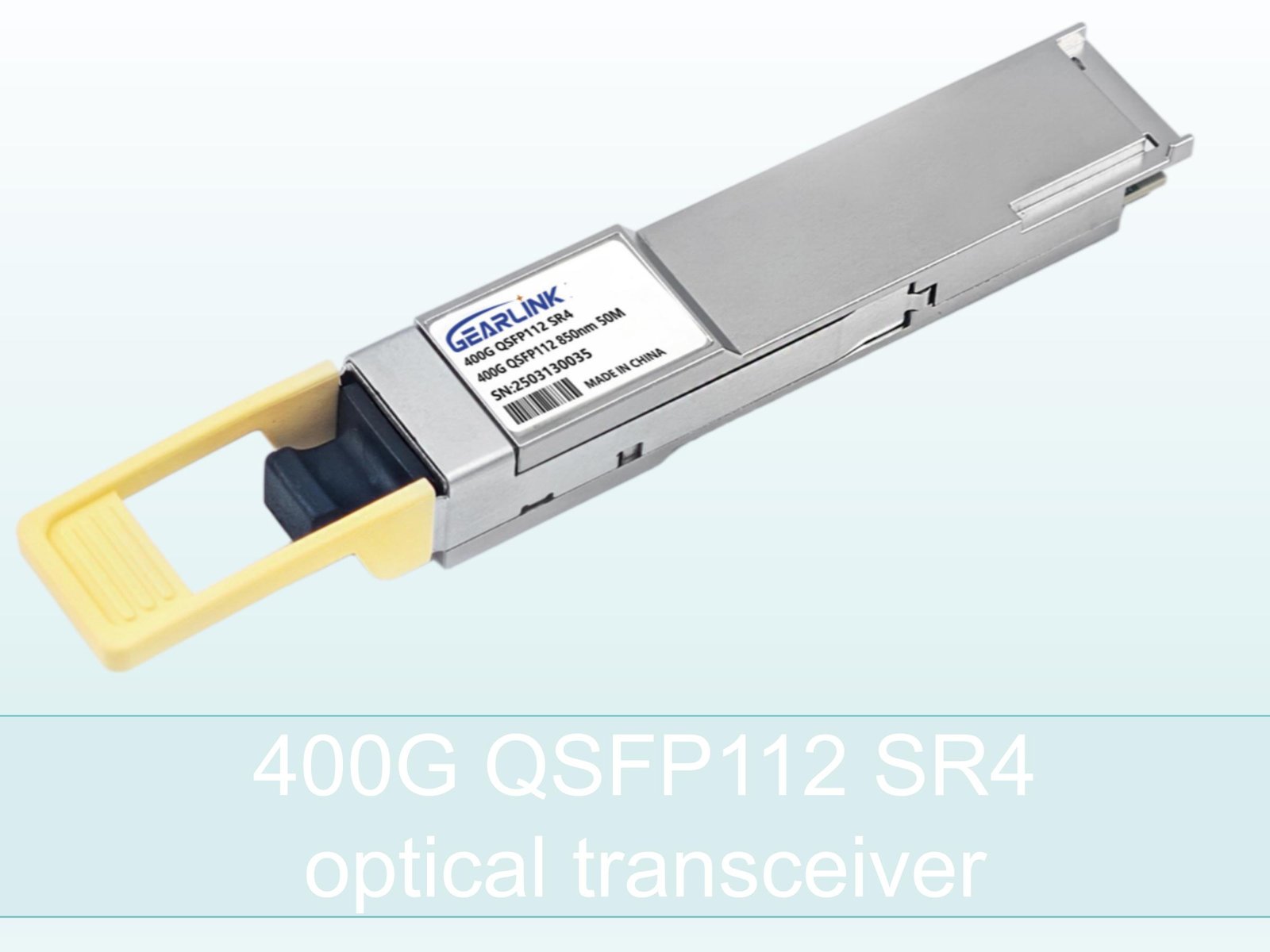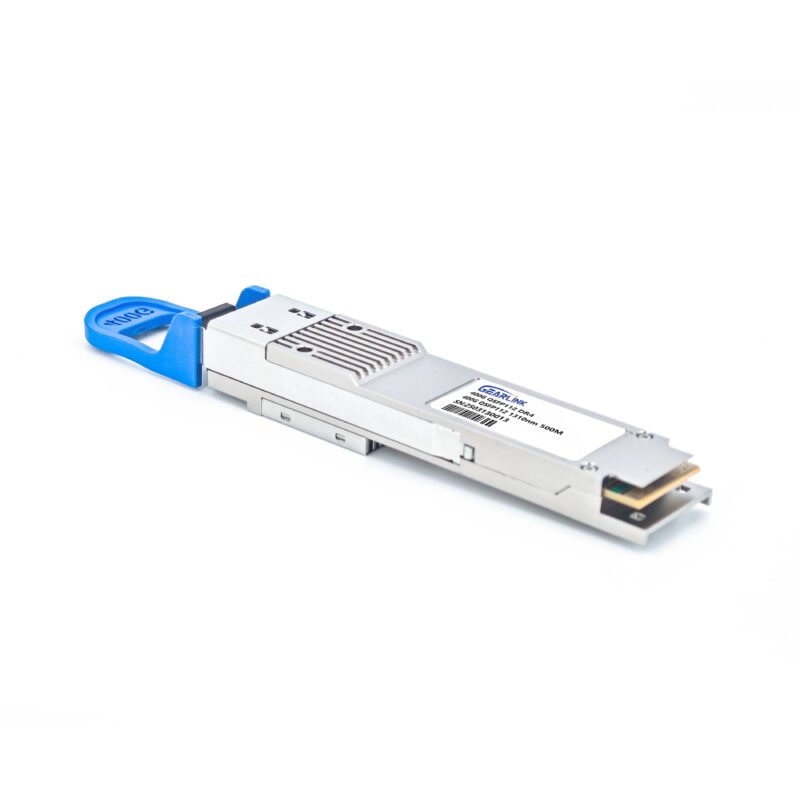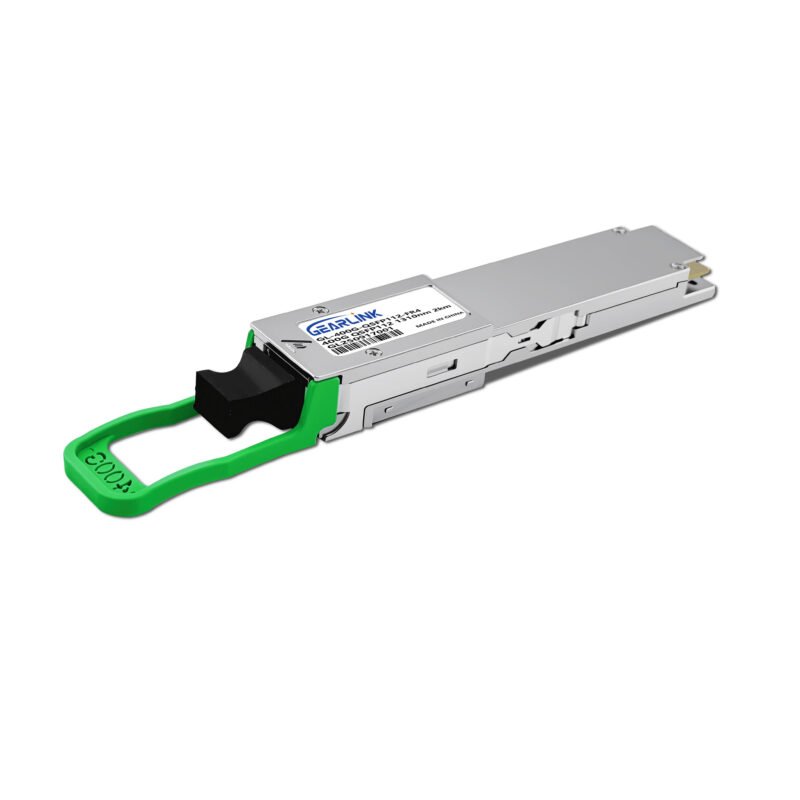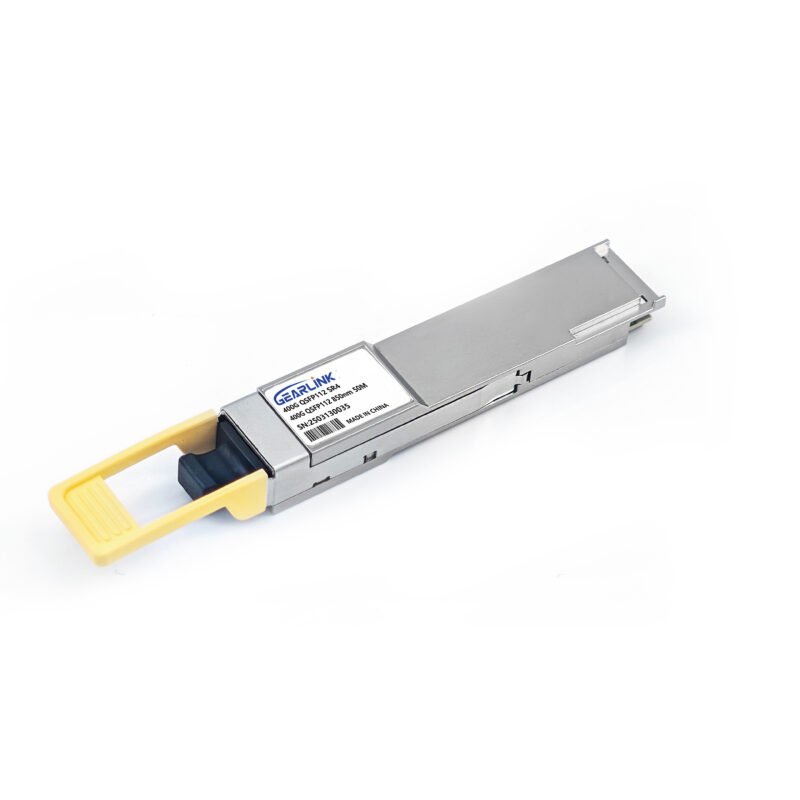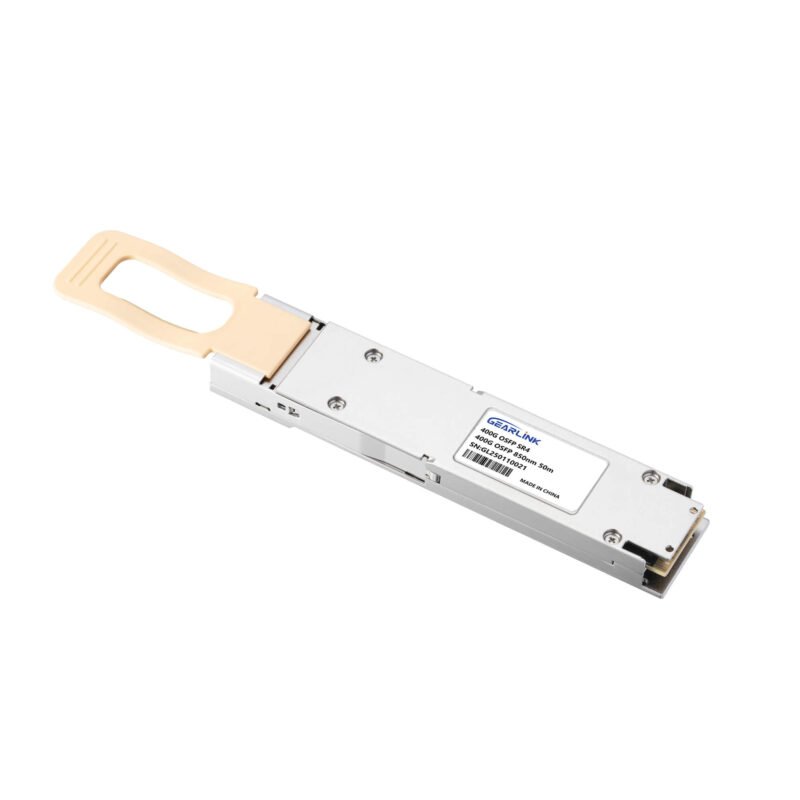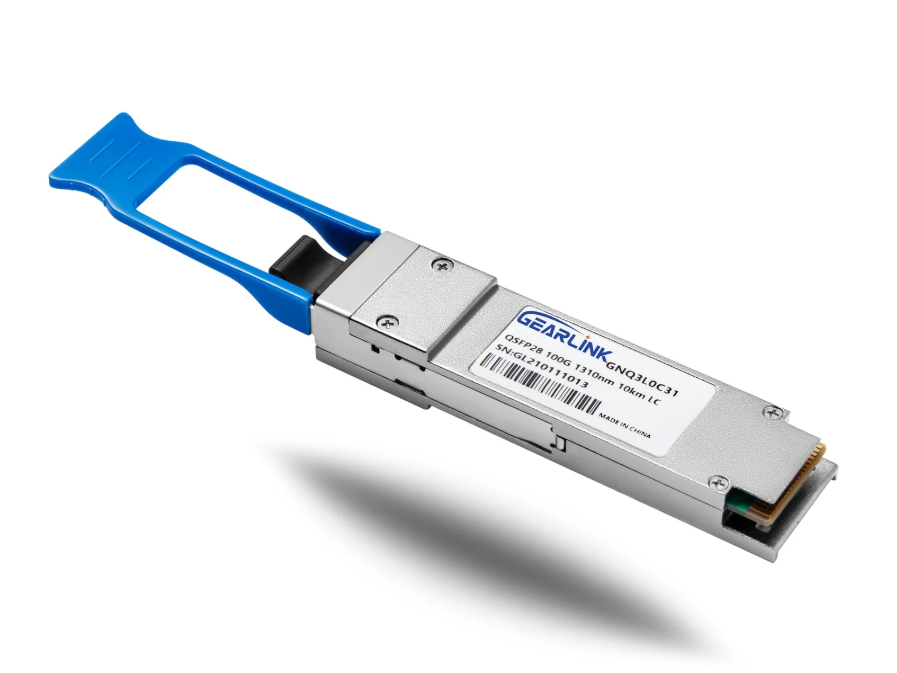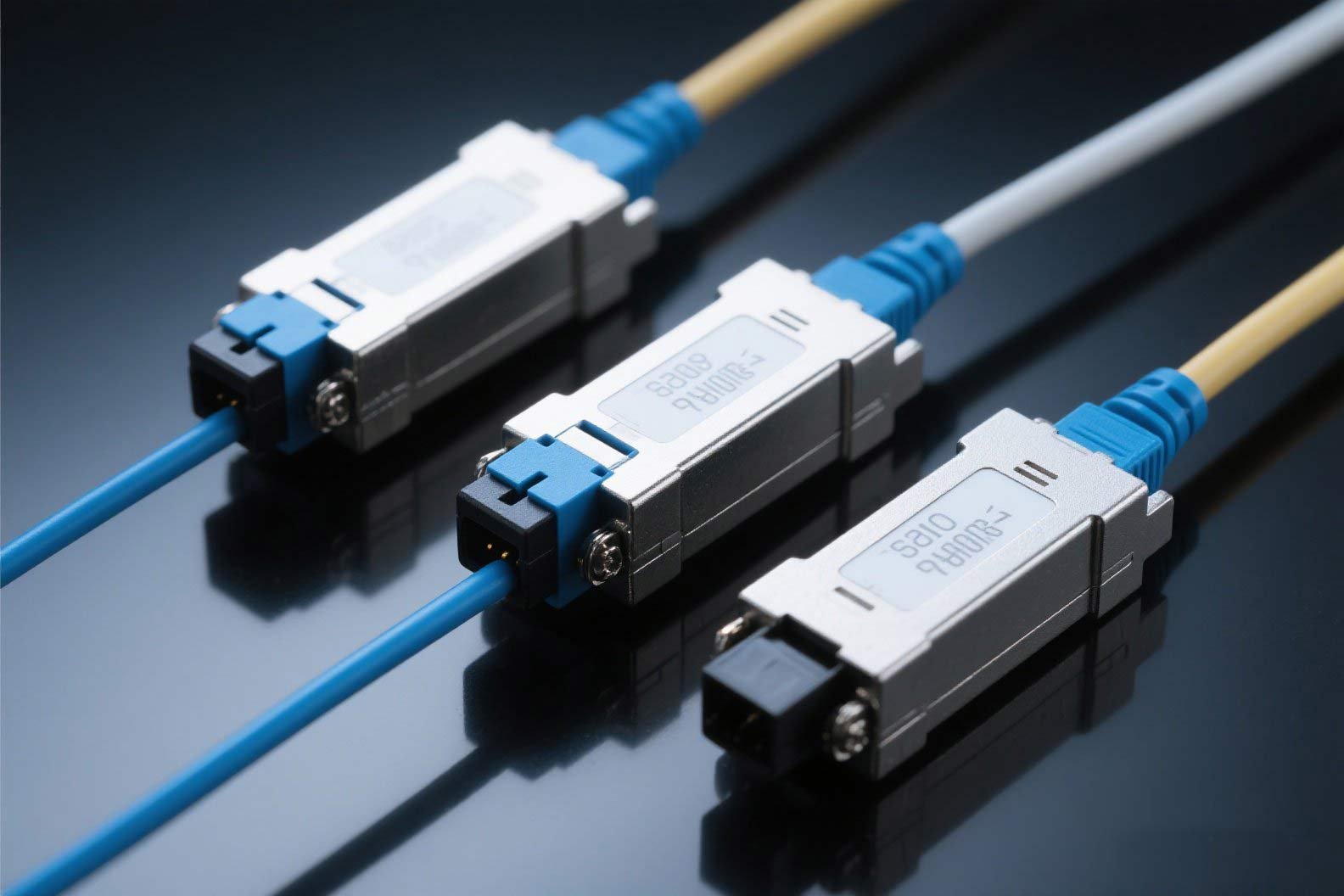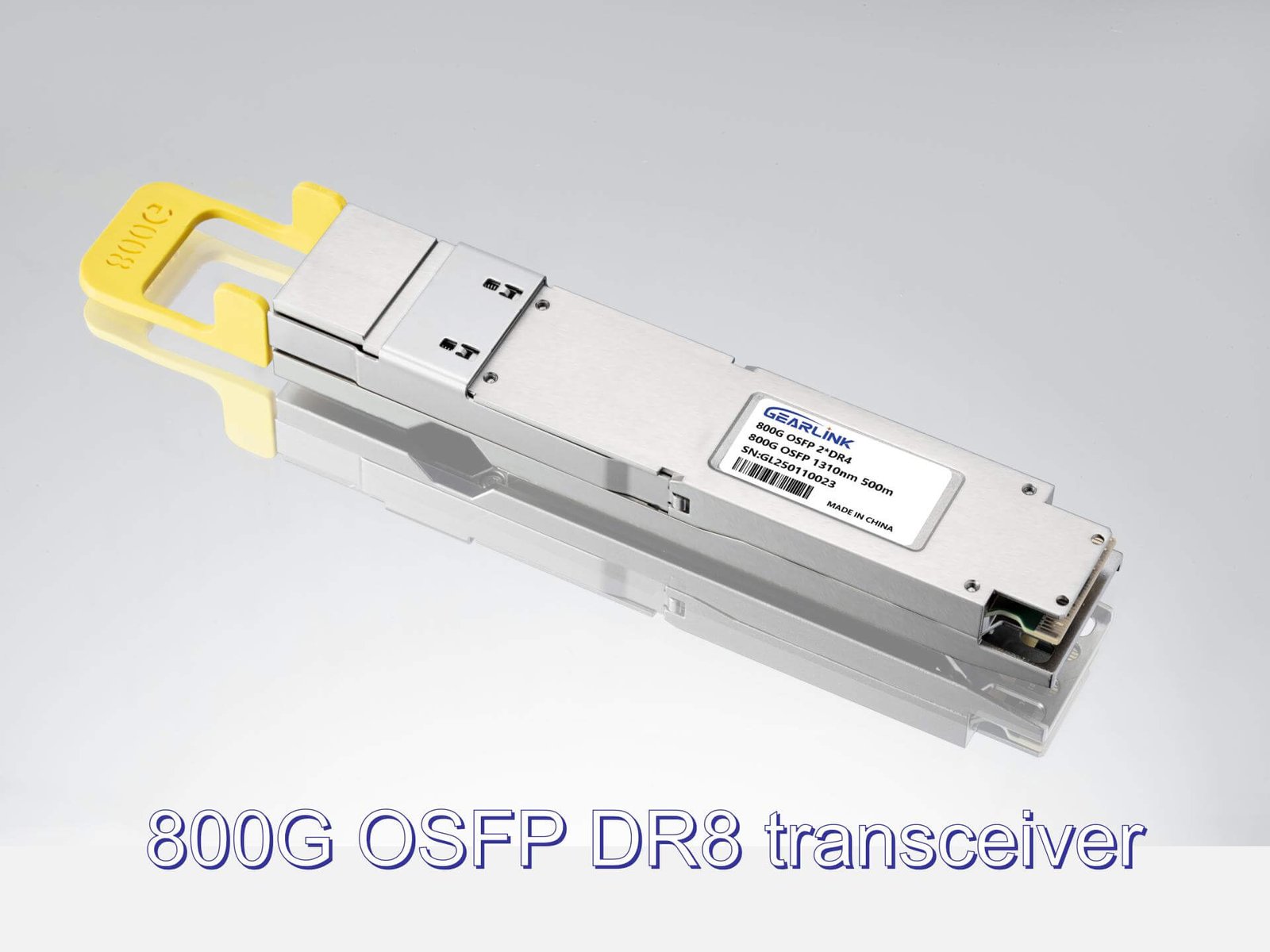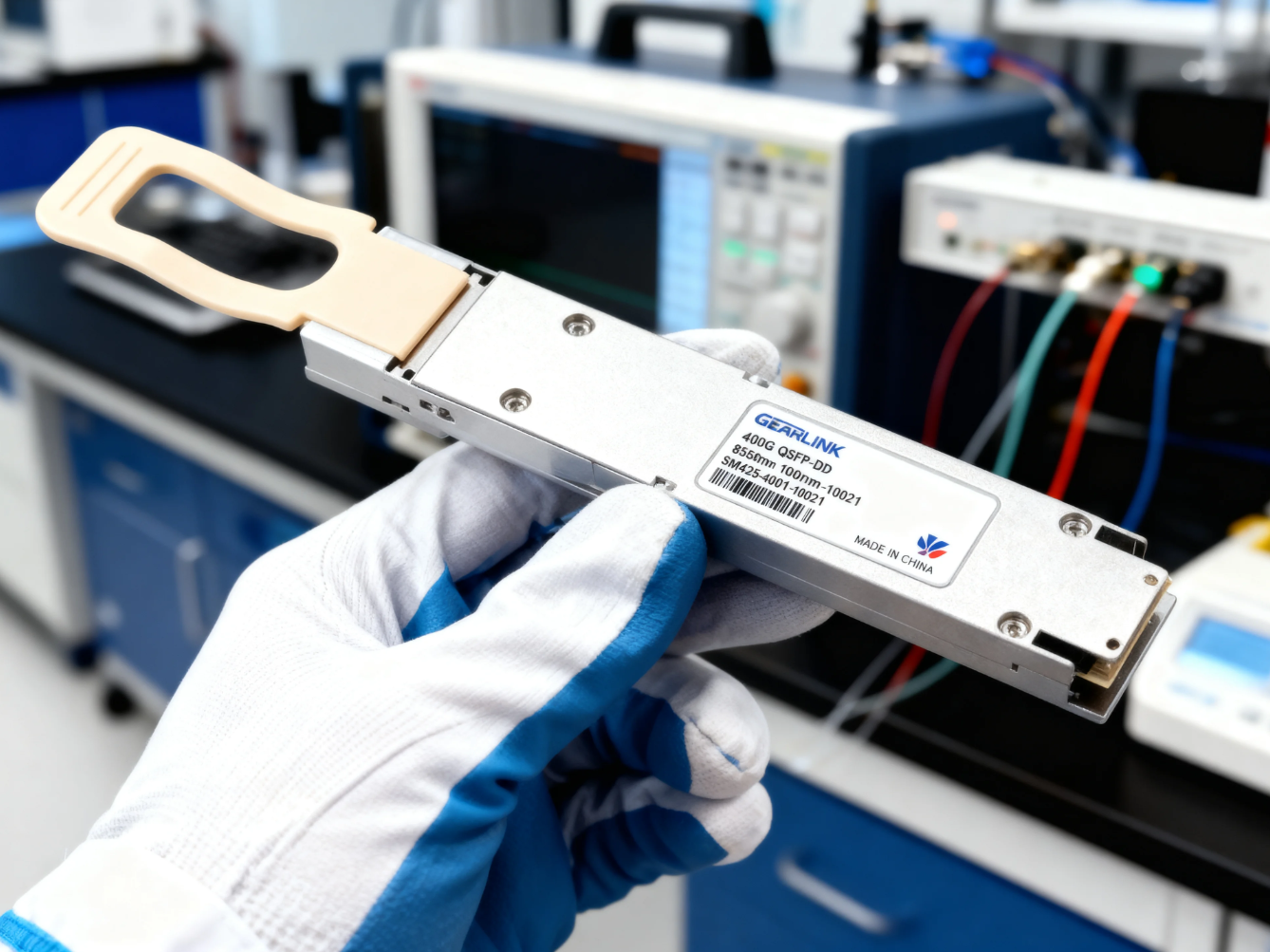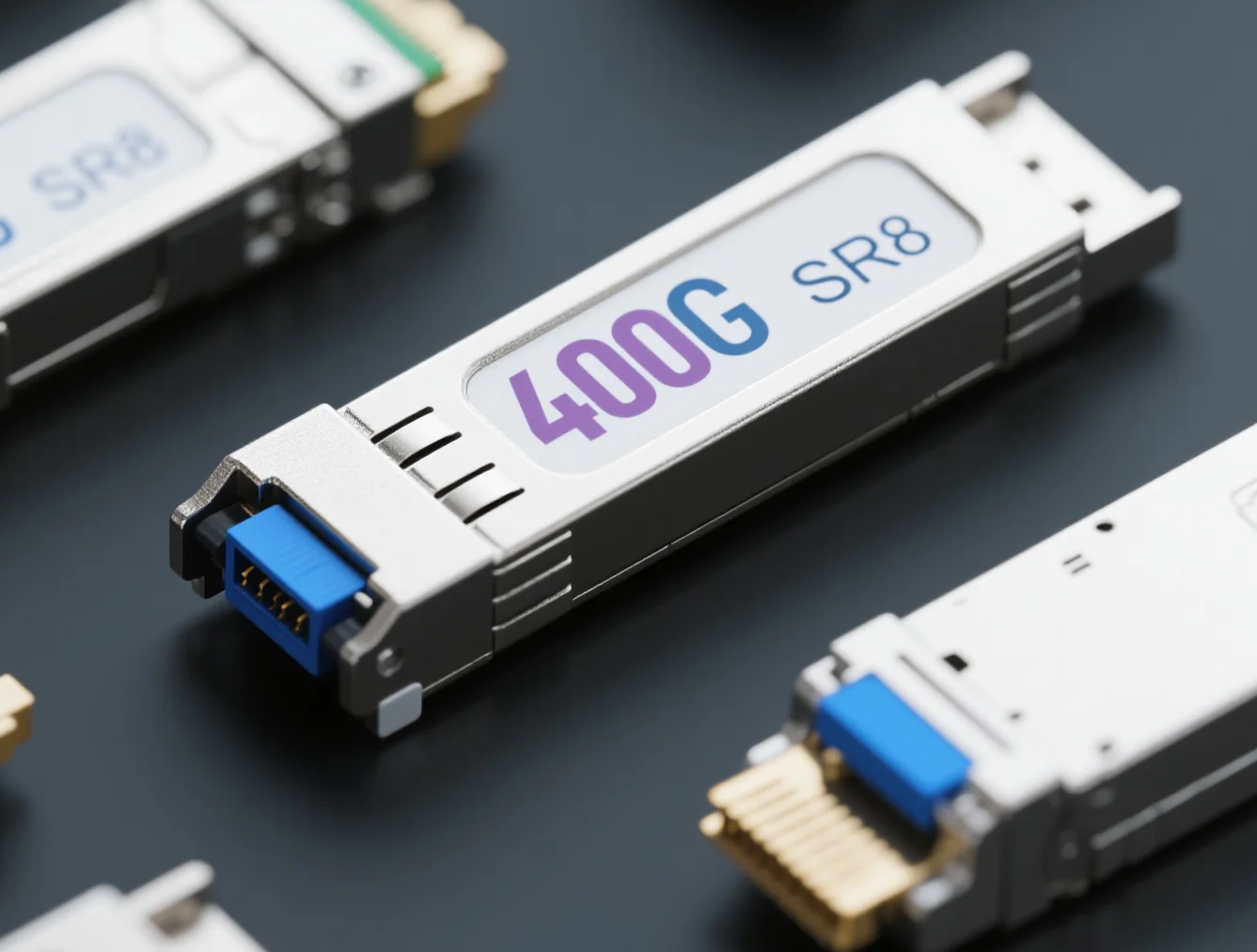Introduction
The demand for faster, more reliable, and energy-efficient data transmission has led to the adoption of 400G transceivers in modern data centers. Among them, the 400G QSFP112 SR4 optical transceiver stands out as a strong solution designed to meet the growing needs of cloud computing, AI, 5G backhaul, and large-scale enterprise networking.
In this guide, the 400G QSFP112 SR4 module, its features, benefits, and comparisons with other 400G optical transceivers will be explored. The article will also cover applications, form factors, and practical deployment insights, ensuring network planners and engineers are fully equipped with the knowledge to make the right decisions.
What Is a 400G QSFP112 SR4 Optical Transceiver?
The 400G QSFP112 SR4 optical transceiver is a pluggable module designed to support high-speed Ethernet connectivity over multimode fiber (MMF). Built on the QSFP112 MSA standard, it uses four parallel 100G channels, each operating at PAM4 modulation.
Key Features of 400G QSFP112 SR4
| Feature | Specification | Benefit |
| Form Factor | QSFP112 (Quad Small Form Factor Pluggable) | Compact and efficient |
| Speed | 400Gbps (4×100G lanes) | Ultra-high bandwidth |
| Transmission Distance | Typically 100m over OM4 MMF | Suitable for short-reach data center links |
| Modulation | PAM4 | Efficient spectral usage |
| Connector Type | MPO-12 | Simplified parallel fiber connection |
| Power Consumption | ≤ 8W | Energy-efficient |
| Standard Compliance | IEEE 802.3cm, MSA | Interoperability ensured |
By leveraging these characteristics, 400G QSFP112 SR4 modules are frequently deployed in data center spine-leaf architectures where short-distance, high-density connections are critical.
Why 400G Optical Transceivers Are Essential in Modern Networks
The Evolution Toward 400G Transceivers
Over the last decade, traffic growth driven by cloud services, streaming, and AI workloads has pushed the network industry from 100G to 400G speeds. The 400G optical transceiver market is being widely adopted because:
Bandwidth demand is doubling every 18–24 months.
100G transceivers are no longer cost-efficient at hyperscale.
Applications like machine learning and edge computing require ultra-low latency and massive throughput.
Advantages of Using 400G Optical Transceivers
High Density: More ports per rack unit.
Scalability: Supports AI clusters and large workloads.
Interoperability: Works with different Ethernet standards.
Energy Efficiency: Lower watts per gigabit.
Cost Savings: Reduced cabling infrastructure when compared to multiple 100G links.
400G QSFP112 SR4 vs Other 400G Transceivers
Comparison of Common 400G Transceiver Types
| Module Type | Reach | Fiber Type | Connector | Key Use Case |
| 400G QSFP112 SR4 | 100m | OM3/OM4 MMF | MPO-12 | Intra–data center short links |
| 400G DR4 | 500m | SMF | MPO-12 | Data center interconnect |
| 400G FR4 | 2km | SMF | Duplex LC | Metro networks, long links |
| 400G LR4 | 10km | SMF | Duplex LC | Long-haul communication |
The 400G QSFP112 SR4 optical transceiver is best for short-distance, cost-effective connections, whereas modules like 400G DR4 or FR4 are required for longer distances.
400GBASE-DR4 QSFP112 PAM4 1310nm 500m DOM MPO-12/APC SMF Optical Transceiver Module
Price range: NT$669 through NT$799400GBASE-FR4 QSFP112 PAM4 1310nm 2km DOM Duplex LC/UPC SMF Optical Transceiver Module
NT$750
400GBASE-FR4 QSFP112 PAM4 1310nm 2km DOM Duplex LC/UPC SMF Optical Transceiver Module
NT$750400GBASE-SR4 QSFP112 PAM4 850nm 50m DOM MPO-12/APC MMF Optical Transceiver Module
Price range: NT$699 through NT$799
400GBASE-SR4 OSFP 850nm 50m DOM MPO-12/APC MMF Optical Transceiver Module
Price range: NT$499 through NT$898
Applications of 400G QSFP112 SR4 Transceivers
Where 400G Optical Transceivers Are Used
Cloud Data Centers
For spine-to-leaf and rack-to-rack connections.
Enterprise IT Networks
High-speed campus backbone upgrades.
AI and HPC Clusters
Training and inference environments requiring low latency.
5G Transport Networks
Backhaul and aggregation nodes.
Deployment Considerations for 400G Transceivers
Cabling for 400G QSFP112 SR4
| Fiber Type | Distance | Connector | Notes |
| OM3 MMF | up to 70m | MPO-12 | Legacy deployments |
| OM4 MMF | up to 100m | MPO-12 | Recommended |
| OM5 MMF | slightly longer | MPO-12 | Costlier but future-proof |
Power and Thermal Management
Since 400G transceivers consume more power than legacy 100G or 200G modules, airflow, and cooling strategies must be considered during deployment.
Future Outlook of 400G Optical Transceivers
The 400G QSFP112 SR4 and other 400G transceivers are transitional technologies leading toward 800G and 1.6T. With growing AI-driven workloads, data centers will gradually replace short-reach MMF modules with 400G/800G DR/FR solutions. Still, SR4 transceivers will remain popular for their low cost and energy efficiency in internal links.
Conclusion
The 400G QSFP112 SR4 optical transceiver represents a powerful, scalable, and cost-effective solution for data centers and enterprise environments. By understanding the benefits, deployment considerations, and comparisons with other 400G transceivers, network planners can build infrastructures that are future-ready and reliable.
FAQ
Q1: What is a 400G QSFP112 SR4 optical transceiver used for?
A 400G QSFP112 SR4 optical transceiver is used for short-reach data center connections up to 100m over multimode fiber.
Q2: How does a 400G optical transceiver differ from a 100G module?
A 400G optical transceiver provides four times the bandwidth, greater port density, and better energy efficiency compared to 100G modules.
Q3: Which fiber type is compatible with 400G QSFP112 SR4 transceivers?
400G QSFP112 SR4 modules typically support OM3, OM4, or OM5 multimode fibers with MPO-12 connectors.
Q4: What are the advantages of deploying 400G transceivers in data centers?
400G transceivers reduce cabling complexity, increase scalability, and improve cost per bit for hyperscale and AI workloads.
Q5: Is 400G QSFP112 SR4 the best choice among 400G transceivers?
For short-distance, high-density links within a data center, 400G QSFP112 SR4 is the most cost-effective and efficient choice.
